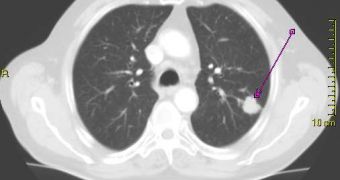Routinely removing cancerous tumors from the lungs helps some surgeons obtain very good results with the procedure over time. They manage to anticipate most of what could go wrong and learn from past mistakes, so as to get better at what they do. On the other hand, surgeons who do not perform that many operations per year are very likely to get poorer statistics, a recent study shows.
Apparently, 40 is a lucky number for some hospitals, as recent surveys show that medical institutions that surpass this limit yearly have significantly lower registered mortality rates than the ones that perform less. The same principle applies to individual surgeons. Those who encounter lung cancer operations often are more likely to succeed in the procedure, whereas those who get to remove tumors only on occasions pose a higher risk to patient health.
Duke University Medical Center investigator Andrew Shaw, M.D., leader of the current study, also pointed out that teaching hospitals are also better at the procedure than non-teaching ones. Pneumonectomy, lobectomy and segmental resection are the three types of surgeries that can be performed as therapies for removing cancer. They involve removing the whole lung, a portion of it, or just a small portion, respectively. Statistics show that all these types of procedures have a much higher failure rate when performed by surgeons only a few times per year.
Similar studies came to the same conclusions in regard to other types of surgeries as well. It seems that the frequency with which surgeons encounter all types of procedures is essential in determining the outcome of the operation. The current survey was conducted on the freely-available Nationwide Inpatient Sample database, which covers about 90 percent of all hospitals in the country for the last 20 years.
Patients are better off if they inquire about the number of surgeries their doctors performed before they choose the hospital to do their procedure. Also, the statistic showed that teaching hospitals, although regarded as more dangerous than non-teaching ones, actually have a lower mortality rate than regular health care institutions.

 14 DAY TRIAL //
14 DAY TRIAL //